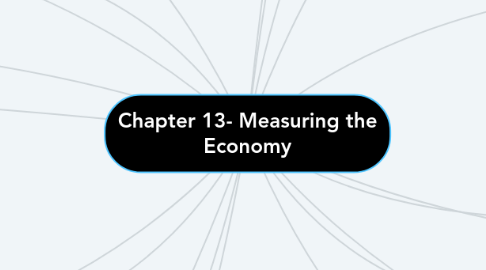Chapter 13- Measuring the Economy
by Alexis Webb

1. Expansion, peak, contraction, trough. These are examples of what to look for when reading a business cycle
2. Business cycles are popularly known as periods of boom and bust. A boom is the expansion phase of the cycle. It may also be known as a recovery, upturn, upswing, or period of prosperity. All these terms mean the same thing—the economy is healthy and growing.
3. Leading, coincident and lagging are examples of indicators in the business scycle
4. The business cycle
5. The BLS uses the consumer price index to attempt and predict inflation's. A lot of people do not think that it is and accurate way to estimate our countries inflation.
6. Changing prices of goods and services result in the different types of inflation: Hyperinflation, creeping inflation, and deflation
7. The amount f the "current dollar" changes and the basic cost of living is based off of the cost in current dollars
8. The BLS tracks inflation by gathering information on Americans' cost of living. it studies the cost of buying the goods and services that households like yours purchase every day. They track any changes using the consumer price index.
9. 13.4
9.1. Inflation Rate- the percentage increase in the average price level of goods and services from one month or year to the next
9.2. Consumer Price Index- CPI- a measure of price changes in consumer goods and services over time; the CPI shows changes in the cost of living from year to year
9.3. Nominal Cost of Living- the cost in current dollars of all the basic goods and services needed by the average consumer
10. 13.5
10.1. Business Cycle- a recurring pattern of growth and decline in economic activity over time
10.2. Recession- a period of declining national economic activity, usually measured as a decrease in GDP for at least two consecutive quarters (six months)
11. There are many problems with unemployment rates being an indicator for Economy Health
12. Unemployment rate shows the conditions of the economy.
13. The 4 types of unemployment: frictional, structural, seasonal, cyclical.
14. How the BLS measures unemployment. (surveys 60,000 households)
15. GDP makes peoples lives better. With so many limitations a higher GDP improves peoples lives in the areas of: literacy and education. health and life expectancy, and peoples standard of living
16. There are many limitations on GDP such as that GDP leaves out unpaid households and volunteer work, GDP leaves out informal or illegal exchanges, GDP counts some negatives as positives, GDP ignores negative externalities, GDP places no value on leisure time, GDP says nothing about income distribution.
17. How to calculate GDP. The equation for GDP is C+I+G+Xn=GDP. C stands for household Consumption. I stands for government Investments. G stands for Government purchases and Xn is country exports. (country exports is always negative.)
18. A countries Economy is measured in GDP.
19. 13.2
19.1. GDP- Gross Domestic Policy- Market value of all final goods produced within a country over a given period of time
19.2. Market Value- price buyers are willing to pay for a good or service in a competitive market
20. 13.3
20.1. Unemployment Rate- the percentage of the labor force that is not employed but is actively seeking work
20.2. Natural Rate of Unemployment- the percentage of the labor force without work when the economy is at full employment; a condition in which the economy is strong and there is no cyclical unemployment


